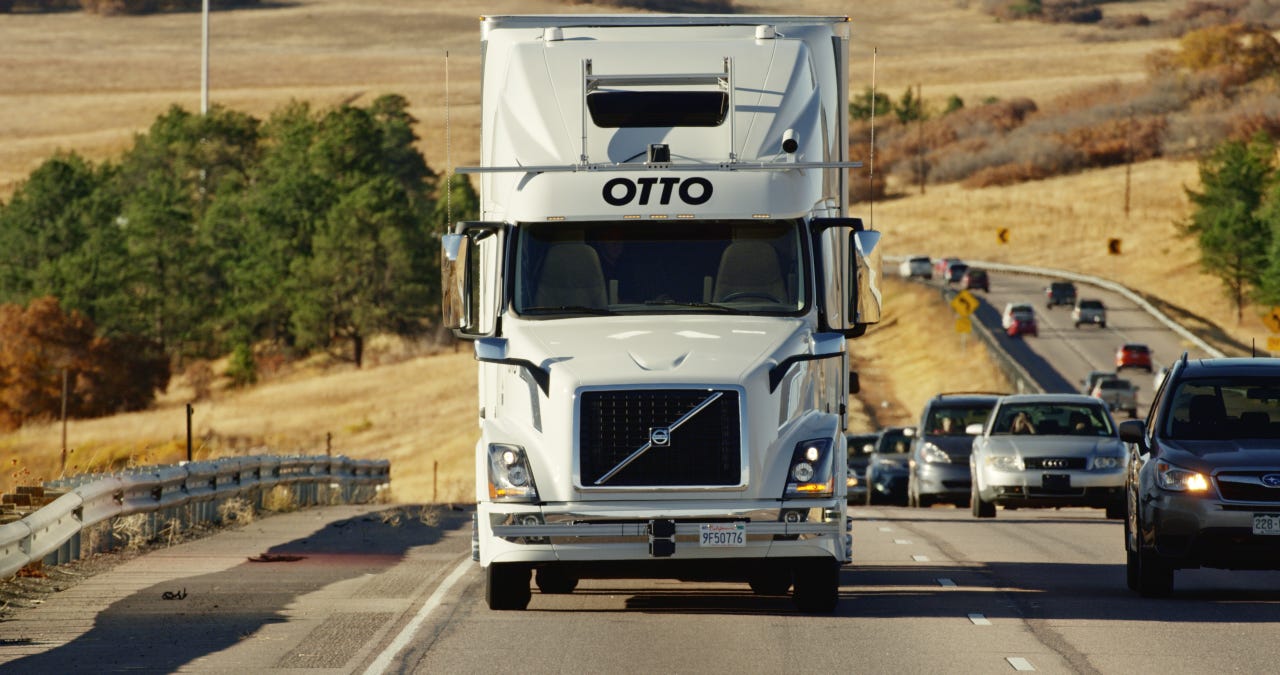Otto's self-driving truck delivers Budweiser

The world's first shipment by a self-driving truck included 51,744 cans of Budweiser beer. A tractor-trailer outfitted with Otto's self-driving kit hauled the beer 120 miles along Colorado's Interstate 25 on Oct. 20.
Self-driving cars have received plenty of attention this year, but self-driving trucks are quietly beating them to the punch. Professional truck drivers travel hundreds of billions of miles each year, and much of that is driven on highways. While city streets are filled with variables -- frequent stops, unpredictable pedestrians, emergency vehicles, and more -- highways are relatively straightforward.

The driver relaxed while Otto's self-driving truck cruised on the highway. (Image: Otto)
Otto is a San Francisco, Calif.-based startup that makes software and hardware kits for self-driving vehicles. The company was acquired by Uber in August and is being re-branded as Uber Freight. The kit adds Cameras, LIDAR, GPS, RADAR, and other sensors to semi-trucks to turn them into level-4 autonomous vehicles, which means they are designed to perform all safety-critical driving functions and monitor roadway conditions for an entire trip, although there is still an option for human driving.
See also: Today's Tesla cars will become tomorrow's self-driving cars | Baby Boomers: Get ready to welcome autonomous cars | Nvidia reveals 'supercomputer' for self-driving cars | The downside to driverless cars: More time for email and conference calls
A blog post that Otto published on Medium explained:
With an Otto-equipped vehicle, truck drivers will have the opportunity to rest during long stretches of highway while the truck continues to drive and make money for them. When you'll see a truck driving down the road with nobody in the front seat, you'll know that it's highly unlikely to get into a collision, drive aggressively, or waste a single drop of fuel.
In this pilot shipment, a professional driver handled the truck until it was cruising on the highway, then he simply pressed a button, moved to the sleeper berth, and monitored the truck while it cruised at 55mph from Fort Collins to Colorado Springs. A Colorado state patrol also followed along as an extra precaution.
The driver's view: an easy button. (Image: Otto)
Autonomous trucks could potentially increase safety and lower costs with round-the-clock driverless operation. For now, drivers must remain in the vehicles, but that restriction will likely loosen in the next few years. In the meantime, drivers could potentially sleep while the truck drives itself, but that would depend on further clarification of rules for self-driving vehicles and commercial truckers. For starters, does sleeping really count as supervising a vehicle? Secondly, does sleeping in a moving truck satisfy "hours of service" regulations, which mandate that truckers take breaks after driving for 14 hours? Either way, self-driving vehicles are imminent, and Coloradans can now brag that they are drinking beer that was delivered by a robot.
The special edition cans say "First delivery by self-driving truck". (Image: Otto)